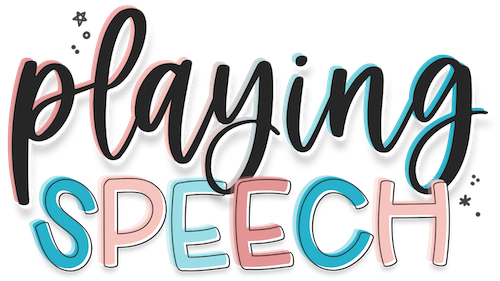6 Essential Components of a Speech Sound Assessment
Must-Have Components of a Speech Sound Assessment
It has taken my a little while to get my system down and make sure I'm looking at every area I want to look at when assessing speech sound disorders. And this does change slightly based on diagnosis or suspected diagnosis.
But let me tell you the absolute bare minimum that I include in each assessment…
Case History. We all know we need a case history. What I want to point out is that I make sure to include if the child has had a hearing screening. I also like to know if they have any oral habits that could possibly impact speech production. I also want to know if they have ever had any speech or language interventions in the past.
Oral Mech Exam. An oral mech exam is super important to do, but sometimes kids are averse to you getting all up in their mouth. I made a pretty funny (if I do say so myself lol) Reel on Instagram that you can watch here about trying to give an oral mech exam to a preschooler. But in all seriousness, we want to rule out any structures that could be negatively impacting speech production. I also want to check and see if I need to make any referrals - for example to a pediatric dentist or an ENT.
Single Word Test. This allows you to get a full phonetic inventory for child. If a child can't participate in a single word test, I write down the phonemes I hear throughout the assessment to get the inventory.
Conversational Speech Sample. I do this with silly picture scenes that get kids talking! Or you can ask about their favorite TV show, game, or toy!
Phonological Awareness Screener. You can use something formal like the PAST (found here). Or you can simply probe various phonological awareness skills. I also like to work in auditory discrimination tasks to see if the child can HEAR the difference in correct vs. incorrect productions.
Stimulability Check. I like to quickly see if the child is stimulable for any phonemes that were produced incorrectly. This helps me plan treatment and gives me an idea about prognosis.
I also include a dynamic motor speech assessment if I suspect Childhood Apraxia of Speech. But this is done on a case-by-case basis. You can use something formal like the DEMSS, or you can use an informal measure like the Informal Childhood Apraxia of Speech Assessment by Bjorem Speech found here.
Informal Speech Sound Assessment and Articulation Screener
Also, if you're looking for a comprehensive and quick-to-administer single word assessment, I recently updated my Speech Sound Assessment!
It's perfect for informal assessment and progress monitoring of your speech therapy students! Four different speech sound assessments are included - a quick articulation screener including syllable shapes and s, r, and l clusters, a phonological patterns screener, a complex clusters screener, and a vowel sounds screener!
The stimuli booklets are small and portable, but the pictures are large and clear with a clean layout to limit distractions! The data sheets are comprehensive, concise, and simple to use!
It also comes with digital stimuli for a no prep/no print option!
Click the photo or click here to check it out. Grab it for all those screeners you are going to have to do this school year ;).



